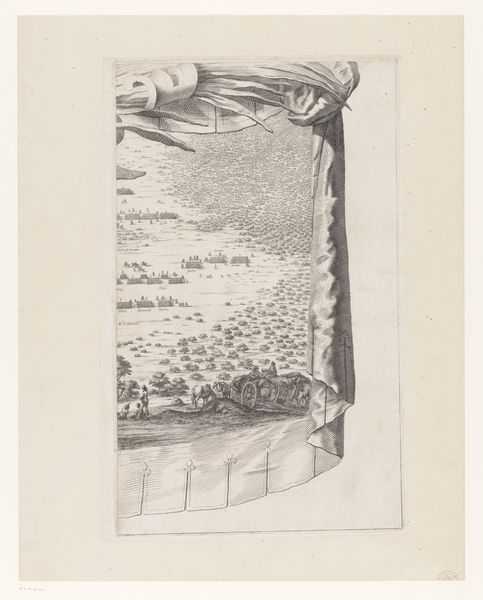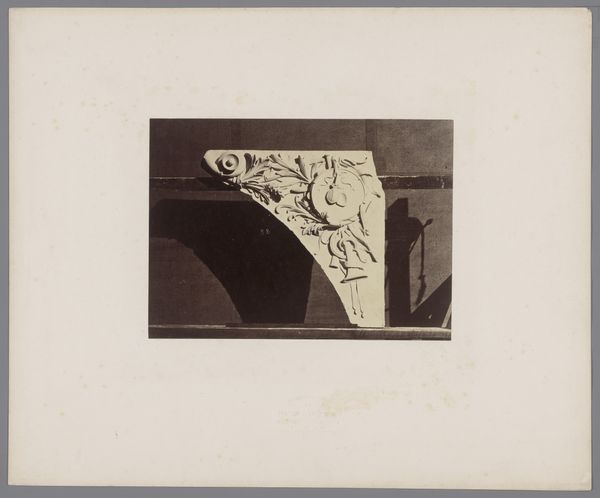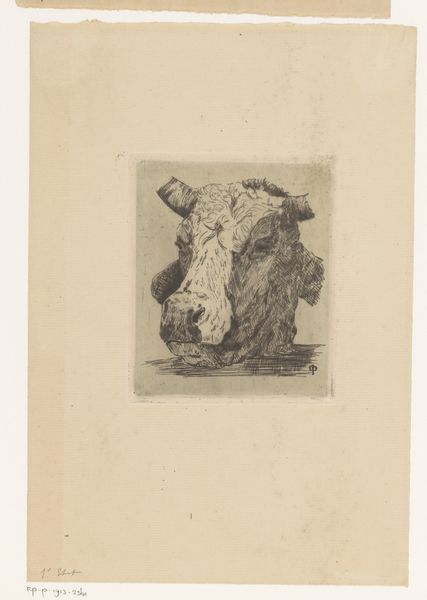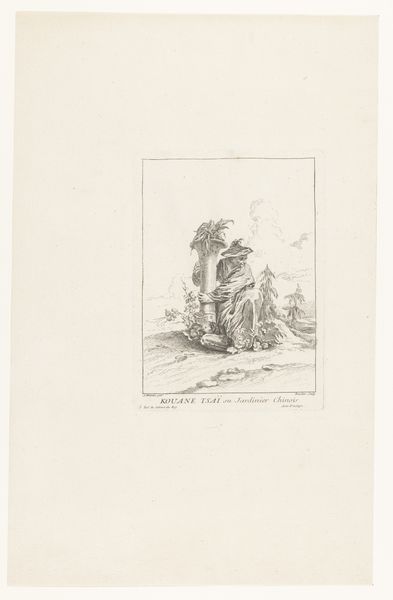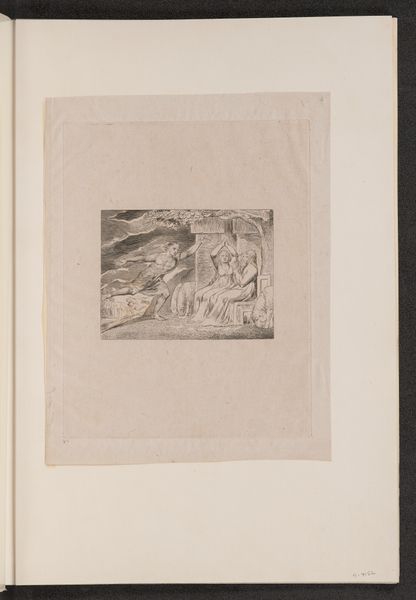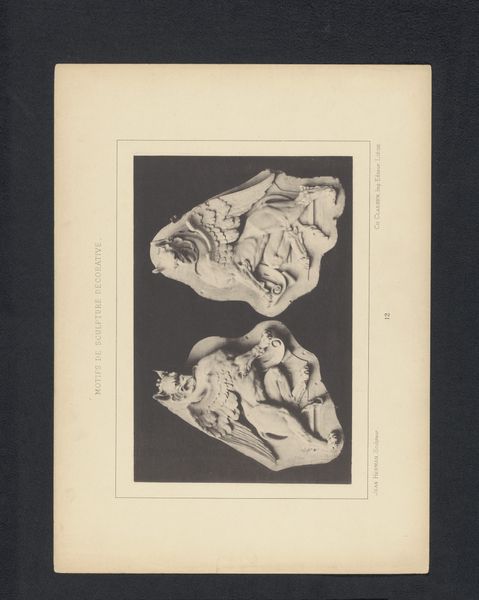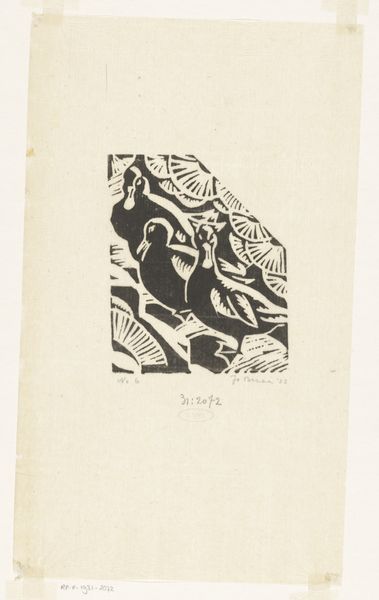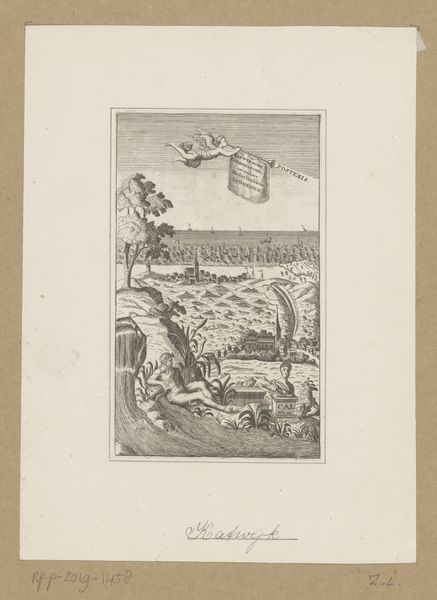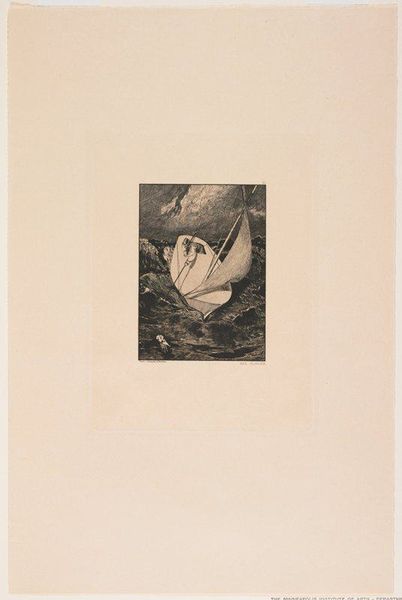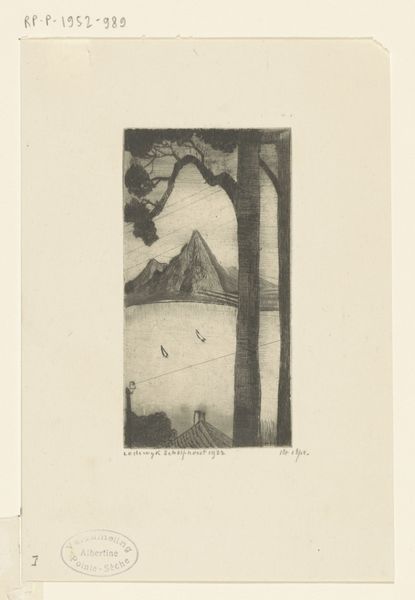
drawing, mixed-media, print, etching, paper, sculpture, engraving
#
drawing
#
mixed-media
#
baroque
# print
#
etching
#
paper
#
romanesque
#
sculpture
#
history-painting
#
engraving
Dimensions: height 113 mm, width 108 mm
Copyright: Rijks Museum: Open Domain
Curator: I'm struck by the crude rendering of the stone in this print; it really emphasizes the age and fragmentation. What do you make of it? Editor: It evokes a sense of history but also a brutal simplicity, doesn’t it? We're looking at "Fragment van een Romeins altaar," or "Fragment of a Roman altar" as it translates, an etching by Hendrick Danckerts created around 1647. Curator: Danckerts was very interested in Rome’s deep history. It would be easy to consider this work merely as part of the visual culture related to the rise of Baroque classicism, but I also wonder about the impact the work may have had on understandings of religion in 17th-century Netherlands, or about access to knowledge within this social and cultural milieu. Editor: That's insightful. From a purely material perspective, think about the labor involved in creating both the original altar fragment and the subsequent print. This image exists because of someone's encounter with a physical object, the transformation of that encounter into lines etched into a plate, and finally, its reproduction on paper. Curator: Precisely! We can examine this work and ask important questions, such as, who was able to view this piece of Roman history? What specific contexts made this viewing possible? Danckerts, then, isn't just representing a relic of a bygone era. He is curating a viewpoint, too, a lens through which people will think of Rome and the meaning we can ascribe to fragments of its past. Editor: I appreciate the detail in rendering the layered architecture topping the ruined stone. It provides textural contrast with the roughly carved figural relief on its side. It draws the eye upwards. Curator: Absolutely, it almost feels as if the architectural detail competes with the bas-reliefs in visual prominence. It challenges any fixed idea about what “Roman” or “ancient” really signified in his time. It seems less reverential and more about accessing the historical aura surrounding a set of found or salvaged artifacts. Editor: Thinking about Danckert's hand, and the hands of those who came before him, makes me question the very concept of ruins. It shows us how fragments accrue value over time through process, perception, and placement. Curator: I agree. We can begin to explore how a print like this helps us to question our own positions. Editor: Indeed. The ruin asks us what’s lost, but also what remains.
Comments
No comments
Be the first to comment and join the conversation on the ultimate creative platform.
